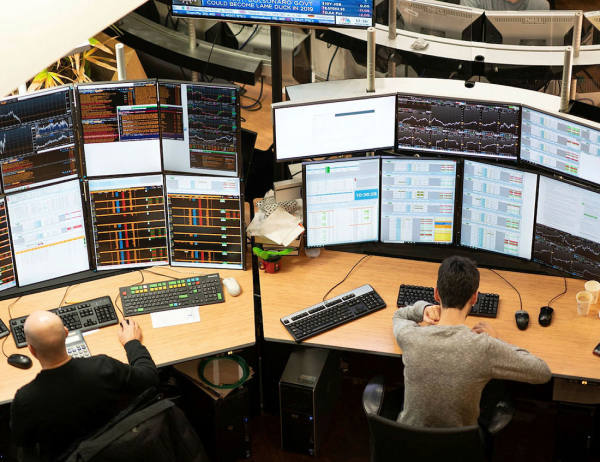“Just when I thought I was out, they pull me back in,” grimaces Al Pacino’s Michael Corleone in one of the few highlights of The Godfather Part III, widely seen as the cinematic disappointment of 1990.
That was the same year in which the scion of another dynasty, Peter Lynch, bowed out of Fidelity’s Magellan Fund, having notched up one of the most impressive runs in investing history: a compound return rate of 29.2 per cent a year, over 13 years.
A year ago, I thought it might be time to dispense with our own attempt to mirror Lynch’s process. Our Stalwarts screen, which first debuted in April 2012, seeks to identify a type of company that Lynch was particularly fond of: those possessing strong balance sheets, good medium-term growth opportunities and products that are always in demand.
One of Lynch’s key insights, spelled out in his best-selling 1989 investing book, One Up on Wall Street, was that situations in which these stalwarts can be acquired cheaply can soon be sold “for a 30 to 50 per cent gain”. And how might one look for these bargains? According to One Up…, it was simply a matter of applying a set of rules, and periodically repeating the process.
That was the idea, anyway. After a middling 11-year track record for our screen, expectations had fallen some way short of that 29 per cent annual return, and the prospect of keeping up with the market seemed to be fading. Between 2018 and 2023, the screen failed to match the FTSE All-Share in four out of five outings. Maybe Lynch’s wisdom couldn’t be condensed into a few rules, after all.
However, just when I thought it was out, the past year’s performance has pulled me back in. With one exception – the defence stock QinetiQ (QQ.) – each of the 2023 picks finished in strongly positive territory, contributing to a blistering 40.4 per cent total return in the period.
| Name | TIDM | Total Return (17 Apr 2023 - 11 Apr 2024) |
| CRH | CRH | 69.3 |
| Keller | KLR | 64.4 |
| Macfarlane | MACF | 40.4 |
| Investec | INVP | 30.7 |
| QinetiQ | QQ. | -3.0 |
| FTSE All-Share | - | 4.9 |
| Lynch | - | 40.4 |
| Source: LSEG | ||
The past 12 months has pushed the screen’s all-time total return to 301.5 per cent, versus 122 per cent from the FTSE All-Share. That translates to an average compound annual growth rate of 12 per cent (versus 7 per cent from the index), or 15.3 per cent (versus 4.9 per cent) over the past five years. And if we add a hypothetical annual dealing charge of 1.5 per cent to better reflect the real-world conditions of investing, the all-time compound average return falls to 10.6 per cent, for a total return of 235 per cent.

The screen is a variant on many of the classic balancing acts that appear in these pages. As well as good prospects for future growth, evidence of consistent profits, and a manageable capital structure, it wants a good price, defined as a price/earnings multiple that appears out of step with future shareholder returns. Its full criteria are as follows:
■ A dividend-adjusted PEG ratio of less than one.
Dividend-adjusted PEG = price/earnings (PE) ratio/average forecast EPS growth for the next two financial years + historic dividend yield (DY).
■ Average forecast earnings growth over the next two financial years of between zero and 20 per cent, as long as forecast growth in each of the next two financial years is positive but below 30 per cent – attractive, but not suspiciously high growth.
■ Gearing of less than 75 per cent. Or, in the case of financial companies, equity to assets of 5 per cent or more, and a return on assets of more than 1 per cent.
■ Three years of positive earnings.
■ Turnover of over £250mn.
This year, six stocks passed every test. As with last year’s batch, a low average price to forward earnings multiple (of eight, compared with 2023’s nine) suggests the market has its doubts about the idea that profits can rise in the coming quarters. That’s despite strong earnings growth expectations across the group in the next two unreported financial years. As with last year’s batch, there’s also a reasonable degree of diversification within the 2024 selections.
However, some readers’ eyebrows might rise at the description of these six stocks as stalwarts. Although he was writing in a different era, Lynch saw this category as a reliable source of steady upward growth throughout economic cycles, and synonymous with “multibillion dollar hulks” such as Coca-Cola (US:KO), Procter & Gamble (US:PG) and Colgate-Palmolive (US:CL) that were capable of regularly growing earnings by “10 to 12 per cent” a year.
Does ITV (ITV) fit that mould? This year, the media group’s adjusted pre-tax profit is expected to climb to £357mn (from £276mn in 2023), ostensibly on the back of lower estimated interest payments and depreciation and amortisation charges. Meanwhile, sales are expected to flatline, as ITV Studios continues to digest a soft advertising market.
On the face of it, then, our screen appears to have highlighted a stock whose apparent earnings momentum may simply be a dead cat bounce in already much-reduced expectations. Rewind to February 2022, and consensus earnings estimates for the current financial year were 15.8p per share, versus 8.5p today. These aren’t the economics of an enormously successful, high-margin and brand-rich global manufacturer of fizzy drinks, nappies or toothpaste, but a media company navigating extreme sector disruption.
Of course, ITV’s assets may prove more valuable than many investors have given the company credit for. But that’s less of a vote in the business’s earnings power than the balance sheet (potentially in the hands of a third party), and a contrarian-like take on its content creation.
Another 2024 selection which has benefited from recent market momentum is Barclays (BARC), which has seen its share price climb by almost a quarter since late February, when chief executive CS Venkatakrishnan made a pledge to return £10bn to shareholders over the next three years.
As with ITV, the lender’s earnings are not typified by “steady upward growth”, not least because the return on its asset base is largely determined by the flux of interest rates, rather than anything in Venkat’s control. Then again, our screen simply requires recent annual profits to have been positive, and for forecast earnings to be good but not suspiciously good; neither metric tells us anything about the variability or predictability of those earnings. However, with the shares valued at such a punishingly low multiple, further delays to the long-awaited interest rate cutting cycle might serve to keep income elevated, thereby propping up the buyback push.
A wider array of metrics on Barclays and the other five Lynch stocks for 2024 are included in the downloadable spreadsheet below.
| Name | TIDM | Mkt Cap | Price | Fwd PE (+12mths) | Fwd DY (+12mths) | FCF yld (+12mths) | EBIT Margin | ROCE | Fwd EPS grth FY+1 | Fwd EPS grth FY+2 | 3-mth Mom | 3-mth Fwd EPS change% |
| ITV | ITV | £2,847mn | 71p | 8 | 7.2% | 10.1% | 8.9% | 11.8% | 11% | 13% | 18.0% | 5.6% |
| Galliford Try | GFRD | £246mn | 240p | 10 | 5.5% | 13.8% | 1.5% | 9.7% | 21% | 13% | 1.5% | 6.4% |
| Morgan Advanced Materials | MGAM | £820mn | 288p | 9 | 4.4% | 1.7% | 18.2% | 28.5% | 20% | 13% | 5.7% | -2.9% |
| Associated British Foods | ABF | £18,107mn | 2,406p | 13 | 2.6% | 6.3% | 7.6% | 10.0% | 27% | 8% | 6.7% | 5.6% |
| Domino's Pizza | DOM | £1,323mn | 335p | 16 | 3.4% | 6.3% | 16.5% | 28.9% | 11% | 15% | -6.8% | 3.1% |
| Barclays | BARC | £27,656mn | 184p | 6 | 5.0% | - | - | - | 14% | 23% | 26.1% | 6.0% |
| Source: FactSet. * FX converted to £ | ||||||||||||




.jpg?source=invchron&width=600)




